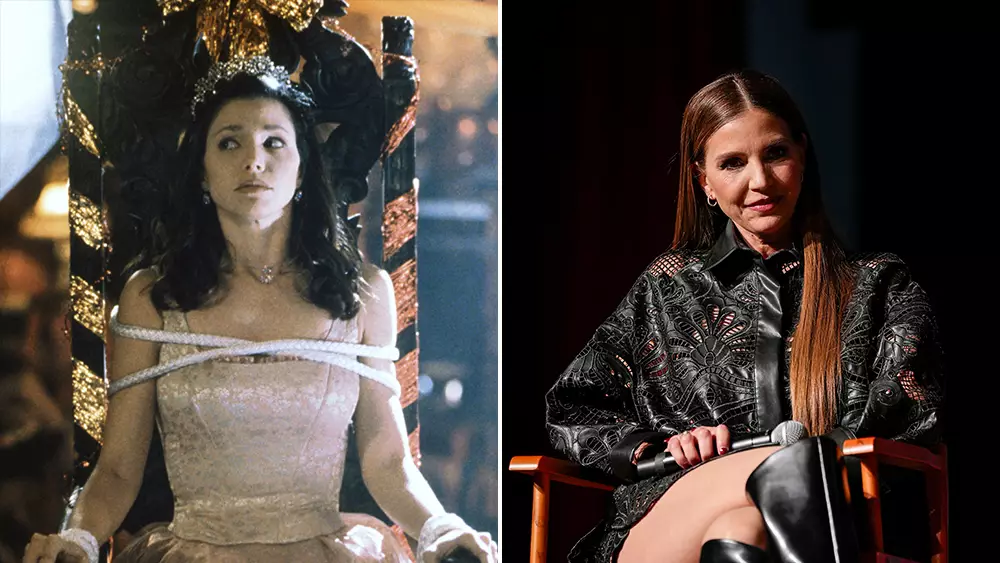Reboots and revivals have become the double-edged sword of modern entertainment. They promise the comfort of familiarity and the allure of nostalgia, yet they often grapple with the challenge of balancing reverence for the original with the necessity of innovation. In the case of Buffy the Vampire Slayer, fans are caught between longing for the beloved characters and trusting the creators’ vision for growth. Charisma Carpenter’s recent statements underscore this delicate dance—affirming her fans’ hopes while clarifying her current distance from the project. Instead of fully embracing or rejecting the reboot, Carpenter’s measured response highlights the importance of respecting individual agency amid the hype of a franchise’s revival.
This cautious stance reveals an understanding that fan expectations can become a double-edged sword. While viewers crave continuity, they are also eager for fresh storytelling, diverse perspectives, and creative risks. The tension lies in honoring what made Buffy iconic while allowing new creators to reimagine its universe responsibly. Carpenter’s denial of her involvement is a reminder that even cherished characters can’t be taken for granted, and that each reboot must navigate the complex terrain of legacy and innovation without alienating core fans or diluting the original’s impact.
The Complex Legacy of Cordelia Chase and the Art of Character Resurrection
Cordelia Chase, portrayed masterfully by Carpenter, exemplifies the power of a well-crafted character to transcend the screen. Her evolution from a superficial high school girl to a complex, sympathetic figure in Angel demonstrates how character development can defy expectations and endure beyond a show’s natural lifespan. Carpenter’s desire to see her character revisited reflects an understanding that Cordelia’s story remains unfinished—perhaps unjustly cut short by narrative decisions or network constraints.
However, resurrecting characters like Cordelia is fraught with risks. The Hollywood tendency to revisit death as a plot convenience can diminish a story’s integrity if handled poorly. Sarah Michelle Gellar’s own resurrection in Buffy suggests that death in this universe isn’t always the end, but that approach can sometimes undermine the stakes. Carpenter’s insistence on respecting the original narrative underscores her belief that characters should be preserved with dignity, not simply used as convenient story devices. Effective character redevelopment hinges on thoughtful storytelling that adds new layers without erasing the significance of what has come before.
The Future of Buffy and Its Characters: A Delicate Balance
The new Buffy series being developed at Hulu showcases a tantalizing mix of seasoned talent and fresh faces. Chloé Zhao’s involvement as director signals a shift towards a more cinematic and potentially nuanced take on the Buffy universe. The inclusion of young stars like Ryan Kiera Armstrong and guest stars hints at a layered storytelling approach that values diversity and new perspectives. It’s clear that the creators aim to strike a balance—respecting the roots of the franchise while evolving the narrative to reflect contemporary themes and sensibilities.
Yet, the challenge remains: how do you honor characters like Cordelia, who have been pivotal in the original series, without forcing their return into a story that may have moved on? Carpenter’s honesty about her lack of involvement underscores a broader truth—some characters are best remembered for their original context. While fans may yearn for reunions or resurrections, it’s crucial that the new series doesn’t rely solely on nostalgia. Instead, it should leverage the legacy of Buffy to forge a new, compelling chapter that can stand on its own merit, not just as a sequel or a cash grab.
Redefining Fan Expectations in an Evolving Media Landscape
The conversation around Buffy’s reboot illuminates a broader cultural shift: fans are increasingly aware of the importance of agency, diversity, and storytelling authenticity. Carpenter’s candidness and her emphasis on dialogue with the creators reflect a healthy skepticism about franchise reinventions that often prioritize marketing over meaningful narrative. As entertainment companies push to capitalize on beloved properties, they must also accept that audiences are more discerning and demanding than ever.
In embracing this new reality, creators have both an opportunity and a responsibility: to craft stories that respect the past while boldly forging ahead. The key is not just in resurrecting beloved characters or iconic themes but in creating a universe that feels relevant and emotionally resonant today. Buffy’s legacy is a testament to powerful storytelling that combines supernatural elements with relatable human struggles. The next chapter should honor this DNA, not merely serve as a nostalgic echo. If done well, it could redefine the franchise and inspire a new generation of fans to see Buffy not just as a relic, but as a timeless symbol of empowerment, resilience, and change.

